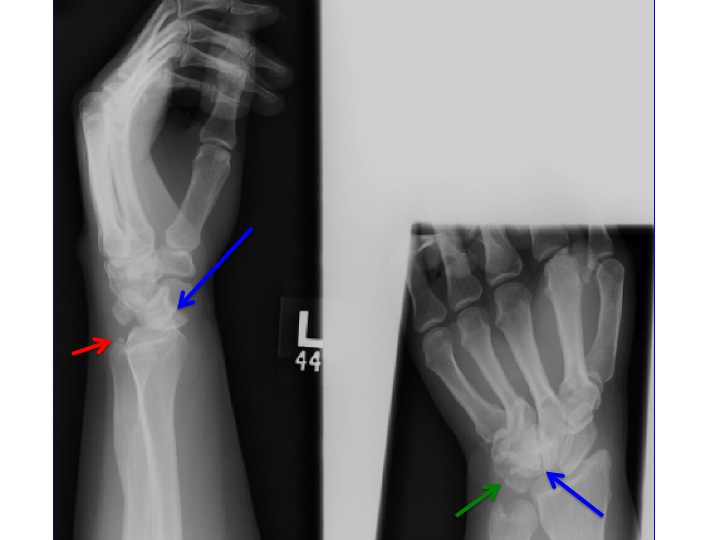Wrist Case 7 Diagnosis
Lunate Dislocation
Diagnosis
 Three views of the wrist are necessary. A lunate dislocation on the posteroanterior view will have the characteristic triangular appearance due to the rotation of the lunate in a volar direction. This appearance is also known as the "piece of pie sign".
Three views of the wrist are necessary. A lunate dislocation on the posteroanterior view will have the characteristic triangular appearance due to the rotation of the lunate in a volar direction. This appearance is also known as the "piece of pie sign".
The lateral projection offers another distinct diagnostic sign. The capitate is seen to lie posterior to the lunate and will migrate to contact the distal radius. With the volar dislocation of the lunate and subsequent rotation, the lunate gives the characteristic "spilled teacup" sign as it loses its contact with the distal radius and appears to rotate.
Be sure to look for other fractures such as the ones depicted by the red and green arrows. The most common associated fracture with a lunate dislocation is a scaphoid fracture.
Blue arrows: Lunate dislocation
Red arrow: Ulnar styloid fracture
Green arrow: Triquetral fracture